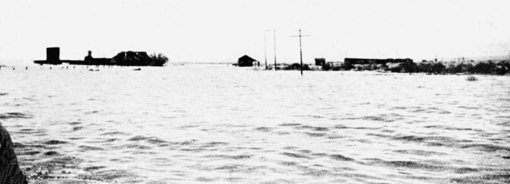The result of this surplus flow, due to the loss of control over the irrigation system, has been the creation of a lake averaging about forty miles in length by ten miles in width, and therefore covering an area of about 400 square miles. The Southern Pacific Railroad has been compelled to build many miles of new road to skirt this embryo lake, and the salt works of the New Liverpool Salt Company are immersed in more than twenty feet of water. This was the condition at the close of the year 1905, and the size of the lake is still increasing.
The first attempt to control this rebellious system of irrigation was made in March, 1905. It was a very frail effort, however, and the construction was washed away before it was entirely finished. Four other attempts followed in almost monthly succession, and each in turn met the same fate as the first. Then came the sixth. It, unlike the former ones, was undertaken on a larger scale and with a fuller realization that the problem to be confronted was a grave one. A large force of men was employed, and the attempt was prosecuted with vigor. Two hundred men, twenty teams, two pile-drivers and two stern-wheel river steamers were employed, and the work was carried on night and day. The intention was to construct a 600-foot dam across the west branch of the river, and thereby control the canal service by diverting the water into the east branch—except at such times and in such quantities as were necessary for irrigation. The dam was made of brush woven into mats and reinforced by several rows of piles. The flood of November 29, however, came before it was finished, entirely covering the work with water and washing it away, and thus destroying the sixth attempt.
But the effect of this failure was only to more thoroughly convince the Southern Pacific Railway Company, which had assumed charge of the work in June, that the canal system must be controlled. The company almost immediately, or in December, 1905, awarded a contract for the seventh attempt, and in January of 1906 work was again commenced.

